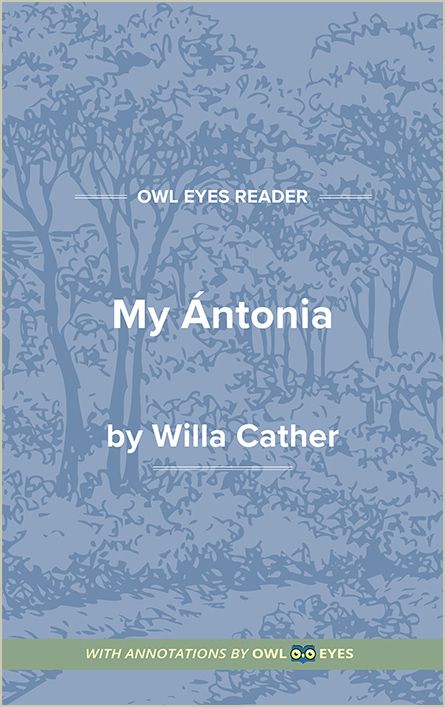Analysis Pages
Facts in My Ántonia
Facts Examples in My Ántonia:
Book I - Chapter I
🔒"Life of Jesse James..." See in text (Book I - Chapter I)
Book I - Chapter II
🔒" “selah.”..." See in text (Book I - Chapter II)
Book I - Chapter IX
🔒"hartshorn bottle...." See in text (Book I - Chapter IX)
Book I - Chapter X
🔒"webbed fingers..." See in text (Book I - Chapter X)
Book I - Chapter XV
🔒"Holy Sacrament...." See in text (Book I - Chapter XV)
"cholera..." See in text (Book I - Chapter XV)
Book II - Chapter XIV
🔒"gaillardia..." See in text (Book II - Chapter XIV)
Book III - Chapter I
🔒"sea temples at Paestum:..." See in text (Book III - Chapter I)
Book III - Chapter IV
🔒"amour-propre...." See in text (Book III - Chapter IV)
Book V - Chapter I
🔒"tintype..." See in text (Book V - Chapter I)

